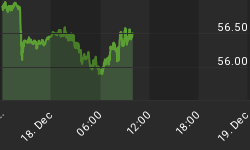It is becoming painfully obvious that the Fed, Treasury, and Administration's disastrous recovery plan hinges on the devaluation of the U.S. dollar. Their specious strategy stems from the belief that a falling currency can re-ignite exports and spark a recovery in manufacturing while putting a floor in U.S. asset prices. But just as the President's initials indicate, the plan stinks of B.O.
Firstly, a falling currency does nothing to expand a country's exports or domestic production. Let's say for example, country "A" has a dollar that is trading in parity with that of country "B". Let us then assume that country A departs on a currency printing policy that mimics that of the United States. Let's also say that because of the increased supply of newly minted dollars, the value of country A's currency is eventually cut in half. Then, just one unit of country B's currency can be exchanged for two of A's dollars. The mistaken belief held by those who espouse a weak currency is that now country B can buy two dollars worth of goods with just one unit of their currency--thus expanding the foreign demand for A's goods and ushering in a manufacturing boom.
However, what they neglect to understand is that the inflationary policy of A has not left the dollar price of the country's goods static. In fact, the value of goods and services provided by A should have doubled as the purchasing power of the currency was halved. The result being that country B is immune from A's inflation and can purchase the same amount of goods with just the same amount of money.
The resulting problem is that not only has A done nothing to stimulate domestic production, it has discouraged foreign investment while destroying the purchasing power of the dollar, sending prices for both domestic and foreign purchases out of reach for the average consumer. The resulting inflation eventually discourages domestic manufacturing because the purchasing power of the country's middle class and poor is wiped out. The result of skyrocketing prices is that discretionary purchases are eliminated, causing massive job loss and plummeting GDP output.
History clearly shows any such currency devaluation strategy to be a complete failure. In 2005 China announced it would increase the value of its currency and abandon its decade-old fixed exchange rate to the U.S. dollar in favor of a link to a basket of world currencies. Since then the Yuan has rallied from .1208 USD to .1467 USD. But the falling dollar has had a negligible effect on U.S. exports. For all of 2005 the U.S. deficit with China was $201.5 billion. In 2008, three years into the dollar devaluation, it soared to $266.3 billion. And despite the worst economy since the great depression--which caused U.S. imports to decline sharply--the annualized rate for 2009 is still $201.2 billion.
If all a country needed to do to achieve manufacturing supremacy and economic dominance was devalue their currency then Georgia and Bosnia would be considered paragons of economic prosperity. That's because a country's economic health, productive output and balance of payments has less to do with the value of the currency and more to do with tax rates, union influence and environmental legislation.
As long as we continue to substitute spurious growth models for genuine growth policies we will continue to lose global power and influence. The only part of the current plan that is sure to work is the cessation of falling asset prices. Unfortunately for us, that will come at the risk of creating intractable inflation and putting our foreign creditors on notice that we will destroy not only the value of their U.S. dollar holdings but the very value of the currency in which they are denominated. Who does Mr. Geithner think he's kidding? The Chinese have already moved to purchase short dated Treasuries so as to allow them an easy escape. They may also dramatically curtail their purchases. For a country that needs to issue nearly $3.25 trillion dollars of debt this year alone and trillions of dollars for many years to come, that is disastrous for this debt-laden economy.
*Tired of paying fees while your account value plummets? Learn about our new performance-based pricing.
Be sure to listen in on my Mid-Week Reality Check
Follow me on Twitter: http://twitter.com/michaelpento















